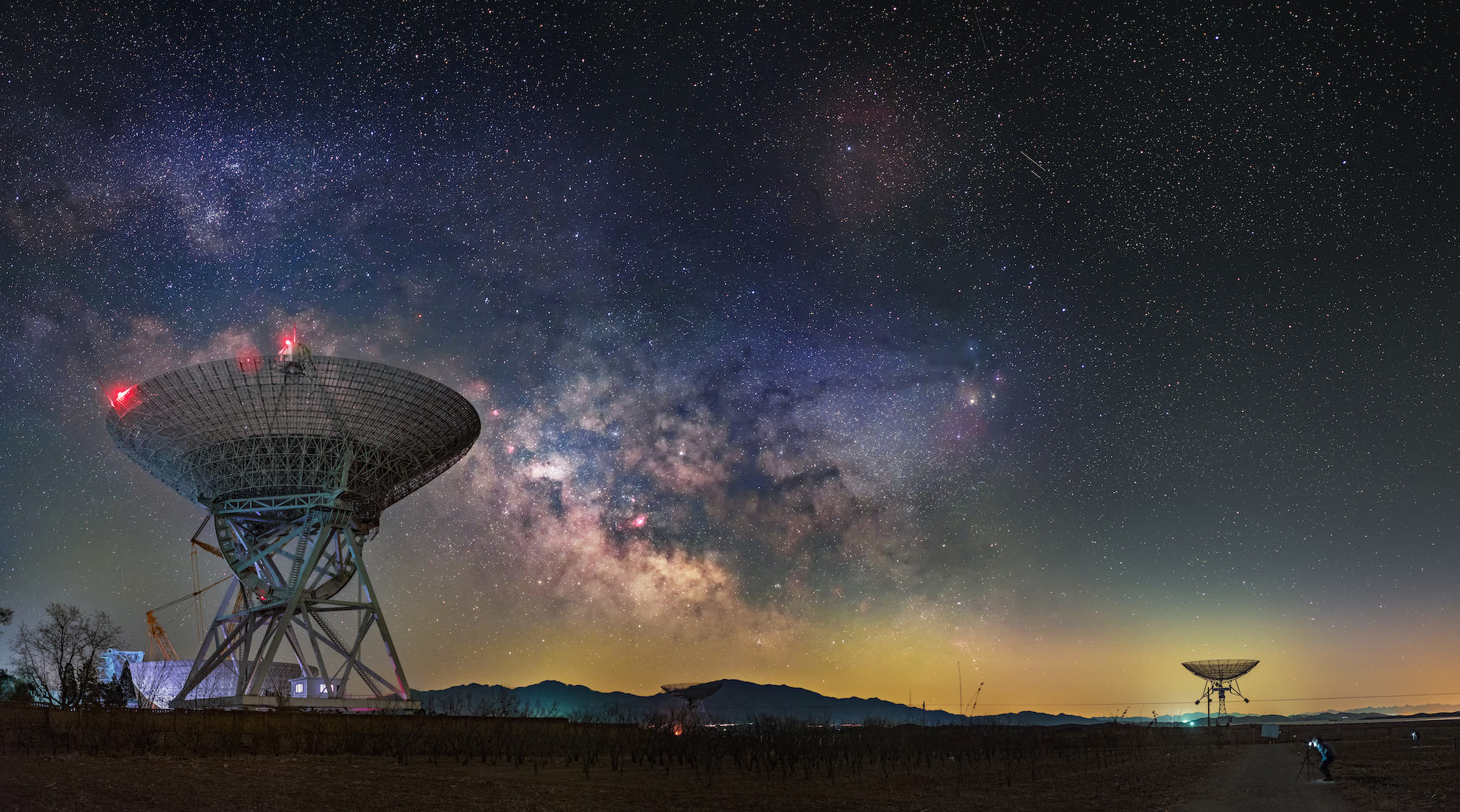Next Year, Scientists Will Send Messages to Search For Aliens

Credit to Author: Daniel Oberhaus| Date: Wed, 13 Sep 2017 19:30:00 +0000
For the last half-century or so, astronomers around the world have been scanning the cosmos with massive radio telescopes in hopes of finding some sign of intelligent life. This network of alien-hunters comprises the Search for Extraterrestrial Intelligence (SETI), but despite all their efforts, the interstellar radio waves have remained quiet. One might even say too quiet.
Depending on who you ask, first contact with an extraterrestrial civilization might happen any day now. Seth Shostak, director of the SETI Institute, has famously predicted that we’ll hear from ET within the next two decades. Others, such as the Cornell University astronomer Yervant Terzian are less optimistic—his probabilistic calculations place first contact in about 1,500 years, assuming there’s anyone left on Earth to receive the call.
But many SETI astronomers aren’t content with only scanning the airwaves for signs of ET. Instead, they think we should also be actively reaching out to the cosmos on behalf of planet Earth.
These astronomers occupy a controversial niche within the SETI community known as Messaging Extraterrestrial Intelligences, or METI. At the forefront of this group is Douglas Vakoch, president of METI International, a research group dedicated to designing and sending messages intended for extraterrestrial recipients.
Vakoch and his colleagues at METI International are fighting an uphill battle. Aside from all the technical problems that come with trying to contact aliens, many SETI astronomers think it’s a bad idea.
The METI opposition group, which includes scientists like Stephen Hawking, argues that since we have no idea what ET might be like, sending a message into the cosmos comes with a huge existential risk. If the aliens happen to be friendly, no problem. But if they’re hostile, that means we’re essentially sending out a beacon that says ATTACK HERE.
A lot of ink has been spilled over whether or not actively attempting to make contact with extraterrestrials is advisable. But despite the arguments to the contrary, Vakoch said he’s not worried.
“One of the reasons people are so afraid of METI is that it seems riskier to do something than to do nothing,” Vakoch told me over email. “When we try to evaluate the risks and benefits of an unknown situation where we have little or no actual data, we fall back on the most vivid images that come to mind. But just because the first images of alien contact that come to mind are horrific, that doesn’t mean they’re realistic.”
By 2018, METI International hopes to begin sending messages into space. This immediately presents a host of problems, such as: how do you design a message for a species that is totally unfamiliar with any language on Earth?
Over the last 50 years, a number of solutions to this problem have been proposed, ranging from full-fledged mathematical languages to rudimentary chatbots, music, or pictograms. For the most part, SETI scientists are in agreement that the message will have to be strongly rooted in mathematics and physics, since these are likely to be the only two types of knowledge we have in common with the ET. METI International is also taking this approach.
“Some of the most prominent messages of the past have tried to cover everything,” Vakoch said. “We’re taking the opposite approach. Rather than trying to communicate everything [about math, science and life on Earth], we are focusing on saying a few things very clearly. For our first messages, we are emphasizing the essentials of math and physics.”
Another point of consideration is where to send a message. Every year, astronomers are discovering more planets orbiting other stars in the so-called “habitable zone.” This means the planet is just far away from its host star to host liquid water without it evaporating or completely freezing. Vakoch said METI International will be targeting nearby stars, especially those known to have planets in the habitable zones.
Finally there’s the question of what the message should say. Here too, history has seen a wide variety of answers. At this point, we’ve sent a Doritos commercial, the molecular formula for alcohol (accompanied with ‘cheers!’ of course), and a bunch of Craigslist classified ads to other solar systems, as well as more scientifically rigorous messages in which we’ve attempted to teach an alien recipient about math, science, and life on Earth.
The question of who gets to speak for Earth is a tricky one, especially given the contentious nature of the METI project as a whole. But for now, Vakoch and his colleagues are focused on figuring out how to communicate with aliens so that when we get that first ‘Hello,’ we won’t be left speechless.
“Many of our most severe problems on Earth today are due to a focus on immediate gratification,” Vakoch said. “If future generations of SETI researchers are looking for replies to today’s transmissions, committed to a multigenerational scientific project, the very act of continuing to look will be a success in itself, whether or not they ever find life out there.”
Dear Future is a partnership with CNET that will explore the people, companies, and communities that are ushering in the future we were all promised. Follow along here.